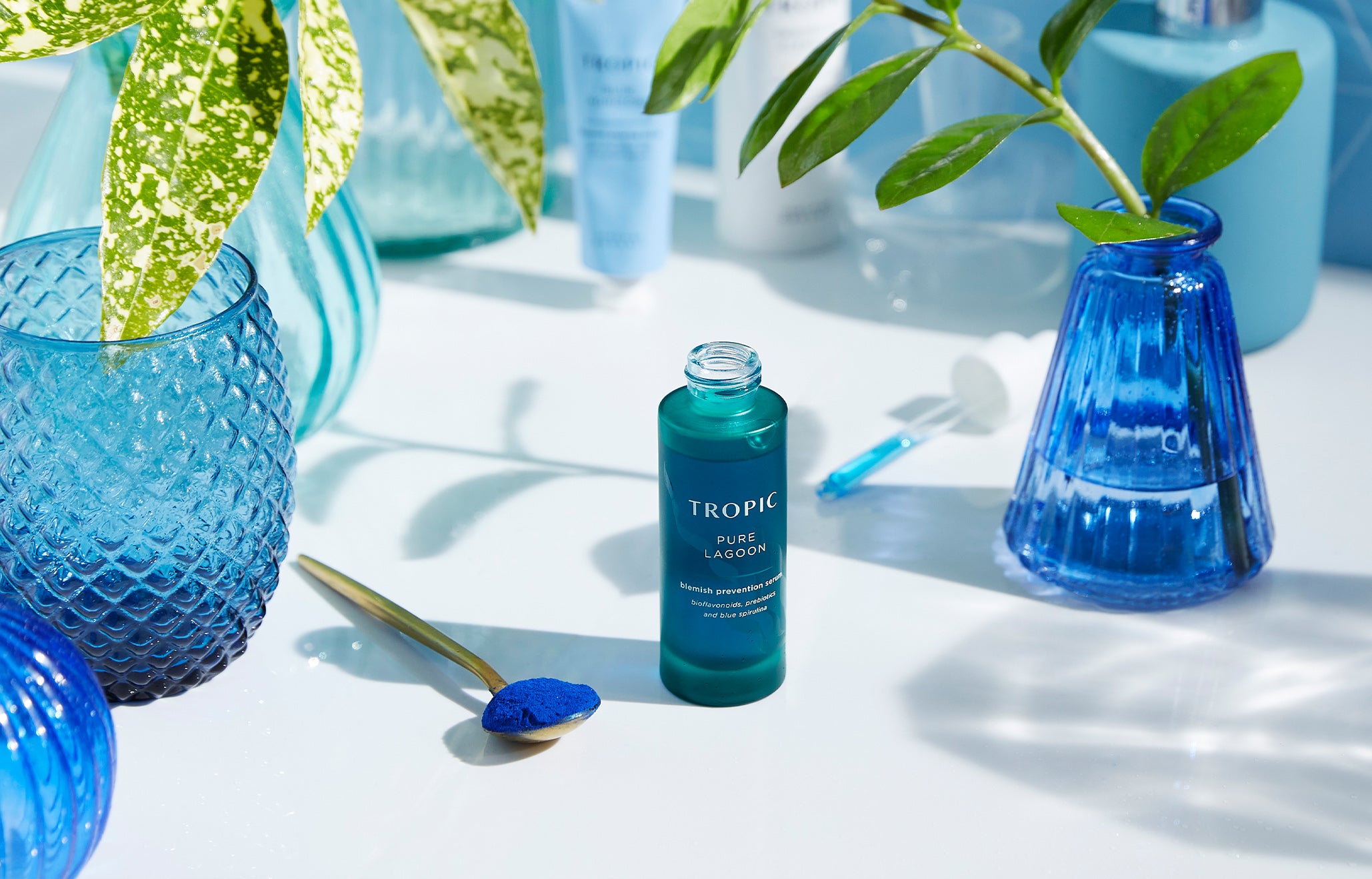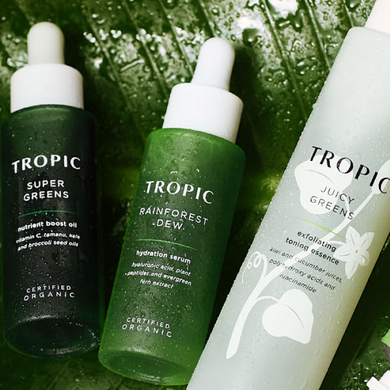Each of us has our own unique skin goals, the checkpoints on our ‘ultimate glow’ mood boards that we’re working towards. With such a diverse range of what we all want from our skin, no two people’s aims are necessarily going to be the same. We know that often deciding where to work backwards from when you’ve got the end of the journey in sight can be an overwhelming prospect. To help out, we thought we’d pull together some of the goals we hear most commonly from our Tropic community and guide you through those first steps on the journey to your dazzling destination. Welcome to Glow Academy...
Seeking a clearer complexion? It’s time we talked about Blemishes. We all end up experiencing them at some point during our lives, so it’s never too late to swot up on some breakout knowledge.
So, what exactly are blemishes?
Blemishes come in all shapes and sizes, so for the purposes of keeping things streamlined and saving you from a War and Peace-length blog, we’re going to put our focus on the three common types you’re probably thinking of – whiteheads, blackheads and pimples. As part of the comedo family of blemishes, they each find their origins in the clogging of skin’s hair follicles (pores).
Pimples are pores that have become clogged and infected, causing the skin around them to become swollen and red. They might have a white tip to them but it’s perfectly normal for them not to come to a head.
Whiteheads (closed comedones) appear very similar to pimples, but the key difference is that they’re uninfected, so they show up without any redness surrounding them. They’ll alway have a white closed tip made up of dead skin cells and oil.
The last member of the family on our list, blackheads (open comedones) are more visually distinctive than their blemish siblings. These sit at the skin’s surface and take their dark appearance from the oxidation of melanin in the clogging sebum (natural oil).
We should note also that our advice is focused on how to handle occasional breakouts that can hit all of us from time to time. If you’re experiencing a more severe, consistent case of acne, speak with a doctor or dermatologist who can advise you on the best course of action.
What causes blemishes?

Pores are an integral part of letting your skin breathe, sitting atop every hair follicle in the epidermis to allow sebum an escape route to the skin’s surface, which it helps to moisturise. Sometimes however, the sebaceous glands ends up producing more oil than necessary, whether that’s because you have naturally oily skin, your body is reacting to external changes like the weather and your environment, or hormonal shifts like puberty, the menstrual cycle and menopause are having an impact. When this happens, the excess oil mixes with dead skin cells to form a plug in the pore, which can get infected as it mixes with commonly occurring bacteria on the skin. From that point onwards comes the development of the three blemishes we mentioned to earlier.
This persistent trio may also build up in areas where your skin is repeatedly experiencing friction – for example, against the collars of shirts, underneath regularly worn tight sports gear or where hats and underwear press against skin. The constant rubbing traps sweat against the skin which starts to clog pores, and as the friction increases, they become more and more irritated until you eventually see a localised breakout develop.
How can I reduce the appearance of blemishes?
- Aim to restore skin to a smooth, fresh starting point twice a week by reaching for an exfoliator. While it penetrates deeply into blemish-causing clogged pores and breaks down any dead skin cells it comes across, the process also has the potential to remove any existing blackheads as they’re so close to the surface layer of skin it’s clearing away.
- Add products with powerful anti-inflammatory properties to your weekly routine to help soothe the inflamed skin which comes with infected pimples. Why not bring the spa experience home once or twice a week with a kaolin clay face mask? As well as its soothing effects, the clay helps draw out excess sebum from skin.
- Introduce a bio-retinol like bakuchiol to your skincare, as its powerful exfoliating and collagen-stimulating properties are a gift for reducing the appearance of blemishes and scarring. If you’ve used a standard retinol product and felt like all it’s doing is causing sore redness, a plant-based alternative like this is the way forward.
- Say it with us non-comedogenic products only! Notice the ‘comedo’ in the name? That’s how you know it’s talking about pores, and it’s essentially just a fancy way of saying that you’re shopping skincare which doesn’t have a heavy, clogging effect of its own.
- We love makeup, but the time has come to officially bar it from our beds. When you’re ready to start counting sheep, always make sure you’ve taken yours off, no matter how tempting it is to wake up to that full face of foundation. While we’re catching forty winks, our skin is going through its nightly renewal process, which naturally results in more sebum production. If there’s a layer of makeup covering the epidermis, it makes it far more difficult for that sebum to reach the skin’s surface, causing (surprise, surprise) clogging.
The blemish FAQ

Are blackheads the result of dirt? With all the beauty talk around clearing dirt from skin and the muddy-brown composition of blackheads, it’s understandable why you might think there’s quite literally dirt clogging your pores. However, as we’ve mentioned, the dark colouring only occurs in blackheads because they’re open on the skin’s surface, meaning that air is able to reach them. When this happens, the melanin in the clog’s mix of dead skin cells and oil reacts with oxygen and gives these stubborn blemishes their notorious hue.
Should I pop pimples myself? We hate to disappoint all the Dr Pimple Popper viewers out there, but in an ideal world, we shouldn’t be trying to manually get rid of them ourselves. Breaking the skin’s barrier in this way is a risk factor for permanent acne scarring, and if you have an infected pimple, you’re actually just exposing the bacteria to the rest of your pores and increasing the chances of more blemishes forming. You might also achieve the opposite of your good intentions, as pressing on these tender areas can sometimes actually embed the clog even further into skin.
Where can you get whiteheads? Although the T-zone (the area across your forehead, nose and chin) is where the presence of whiteheads, black heads and pimples is most frequently discussed, you can experience all three pretty much anywhere on your body! From head to toe, we’re covered in pores to keep skin at its healthiest, so it’s not unusual at all if you notice the signs of clogging anywhere other than your face. The most commonly affected areas on the body are the back, chest, arms and shoulders.
















